If you’re wondering do solar lights need direct sunlight, the simple answer is yes. Although not efficient, indirect sunlight can deliver enough power to light up your backyard for a few hours. Alternatively, you can use artificial lights and clean or move around the solar lights to ensure constant exposure to sunlight throughout the day.
Or, you can use solar generators. Jackery Solar Generators are one of the best available in the space, as they deliver additional benefits such as portability, noise-free, and safety. Aside from solar lights, you can use them to power your other home appliances during blackouts or emergencies.
Key Takeaways
- Solar lights don’t need direct sunlight to generate enough electricity.
- The process starts when batteries convert sunlight into electricity, store it in the battery, and illuminate the light when needed.
- Some benefits of solar lights include low maintenance, energy efficiency, versatility, cost-effectiveness, and eco-friendliness.
- Solar lights are designed to work in any temperature (hot, cold, or rainy), but strong winds or snow cover can somewhat affect their performance.
- Even in the shade, the solar panels work to generate electricity. However, the output will be significantly reduced to around 5% -20%.
- You can charge solar lights without the sun using indirect sunlight, artificial lights, solar generators, and cleaning/moving around the solar lights.
Do Solar Lights Need Direct Sunlight?
The simple answer to “Do solar-powered lights need direct sunlight” is that it’s subjective and depends on the speed of the process.
It’s self-explanatory that solar lights need sunlight, but its intensity dictates how long it takes for the lights to charge. For example, direct sunlight provides the highest light intensity, and exposing it for up to 4 hours lets you have a backup of 6 hours, while 8 hours can power it up for 15 hours.
If a solar light stays permanently under direct sunlight, the battery keeps charging. In recent advancements, however, batteries stop charging once they are complete, which is crucial for their long life.
Remember that the amount of energy they can harvest reduces if they are exposed to indirect sunlight or kept in shady areas, such as in cloudy weather or under trees.
How Do Solar Lights Work?
Before understanding how these lights work, note down the components: solar panel, battery storage, LED light, and controller.
The process starts with the batteries converting the incident sunlight into electric energy. When sunlight illuminates the solar panel, it excites electrons in the tiny solar cells composed of silicon layers or other conductive materials and generates an electric current. This process, also known as the photovoltaic effect, helps the solar panel harness solar energy effectively, making it a cost-friendly solution for lighting up backyards and other outdoor spaces.
Then, the battery storage comes into play. As in the name, it stores the generated current for the lights to function at night or in overcast conditions. Finally, a controller regulates the flow of electricity from the battery to the LED light when needed and protects the battery from overcharging or over-discharging. It potentially raises the battery lifetime.

What Are The Benefits of Solar Lights?
Solar lights are a green and effective alternative to all lightning solutions due to their multiple advantages, like low maintenance, energy efficiency, versatility, cost-effectiveness, and others. Let’s discuss these in detail:
Low Maintenance: Solar lights don’t need much maintenance, as there aren’t any moving parts that can wear out or break down. The batteries used in these generally last 5-10 years, depending on the technology used. LEDs last up to 22 years, making them a cost-effective alternative.
Energy Efficiency: When an appliance is accessing energy from a source that has it in infinite amounts, it becomes energy efficient. You can save a chunk on your electric bills, and it automatically turns up when the sun goes out, so you don’t need to check the lighting outside when it’s already dark. And most importantly, as these are powered by the sun, they serve as an excellent backup during power outages or emergencies.
Versatility: Solar lights are usable anywhere, from street lighting, parks, parking lots, and boat ramps to small applications like landscapes, signs, pathways, and more. These are customizable per the purpose and installable in rural and urban areas.
Cost-Effective: Although it requires a significant investment upfront, it’s worth an investment as it saves on your electric bills. Considering its long lifetime, you’d soon recover your cost and stay in profit in no time. Besides, it’s a reliable alternative to traditional lights in cases of power outages and emergencies.
Eco-Friendly: These solar LED lights are an excellent alternative for those who want to save on electric bills and help save the environment at the same time. By lighting up the lights from solar power, you potentially reduce your carbon footprint and make the world a better place to live.
Do Solar Lights Work in Extreme Weather?
As a general thumb rule, solar lights are designed to work all year round in various temperatures, hot or cold. While many people find that these lights might not function optimally during cold, the reason might be the cloud cover rather than the freezing cold temperature. In fact, many solar lights are IP65-rated, which means they can withstand snow and rain. Fixtures are tilted to roll off the snow, and panels are designed to resist warping from temperature fluctuations.
That’s not it. Rain can potentially improve its efficiency by washing off dust and dirt, but the electricity yield depends on the intensity of the rain, and the lights might not be very bright.
While there isn’t any temperature requirement to take them inside, it’s crucial to watch out for other weather elements. Speedy winds might knock them over, or large amounts of snow might cover them up, reducing their ability to function effectively. During these times, if you wish to bring them inside, store them in a dark place.
Do Solar Lights Work in The Shade?
The simple answer is Yes. Solar panels use photons to generate electricity, which is present in both direct and indirect sunlight.
However, as mentioned earlier, the lower the intensity of the exposed sunlight, the less optimally the light performs. The photovoltaic cells in solar lights require sunlight to charge the batteries, so less sunlight passing through shade means fewer photons reach the panel. So, the lights in the shade generate less electricity, resulting in reduced battery charging and shorter operating times for solar lights.
A few examples of shade are buildings or other structures, trees and branches, poles, clouds, etc. To enhance sunlight penetration, you must cut down the branches, position the lights to avoid shading from poles and buildings, and wait for the cloud to go away to get access to direct sunlight.
How to Charge Solar Lights without Suns?
Places like Alaska, Connecticut, Massachusetts, and others, with peak sun hours of up to 3 hours, might not provide enough power to solar lights to illuminate throughout the night or extended power outages. It’s, therefore, crucial to stay informed of the ways to charge the solar lights without the sun, which are as follows:
Charge with indirect sunlight
It’s a common perception among users that solar lights are chargeable only using direct sunlight. But as mentioned earlier, this isn’t the case. As long as there’s a little sunlight, the solar cells generate and store electricity.
Diffused light is an indirect light that reflects off water, snow, or windows and comes through clouds. It’s less effective than direct sunlight at charging lights, but it still works. If the panels mostly have access to diffused sunlight, it’s crucial to make the most of what’s available. For that, ensure they aren’t in the shade and receive as maximum daylight as possible.
Charge with artificial lights
Charging your solar lights is possible with something as simple as traditional incandescent or home LED lights. Although it isn’t as effective as natural sunlight, it still works. On average, it takes an incandescent or LED light around 12-16 hours to fully charge.
Place your solar panels just underneath a light to charge them. To achieve the best effect, try to keep them as close as possible.
Use Solar Generator
If you frequently travel, live off-grid, or the panel is in the shade, using a portable solar generator is an excellent way to charge your solar lights. These battery backups are highly efficient and can store energy for use during extended power cuts or low sunlight.
Among the available options, the Jackery Solar Generator is an ideal choice for charging and powering solar lights, among other indoor and outdoor appliances. A built-in management system ensures a stable voltage flow to keep the internal circuitries in working condition.
Clean or move around the solar lights
Another way to consider when charging the solar lights on cloudy days is to keep the panels clean of dust, dirt, and other debris. Use a damp cloth, water, and soap to remove any obstruction. Ensure that it is done periodically to keep the lights' output at maximum.
Other than that, if buildings or trees shade your solar panels, they attract little solar energy. So, relocate them with enough access to sunlight throughout the day. Try experimenting with the location and understand the areas where there’s maximum exposure to sunlight.
But if you don’t have access to any optimal location, place a nearby to reflect the sunlight onto solar panels. Although it isn’t very effective, it works. Ensure that the mirrors are twice the size of solar panels, which increases the possibility of solar panels receiving more sunlight.
Jackery Solar Generators for Solar Lights
Jackery is a pioneer and an award-winning manufacturer of solar panels, generators, and power stations. Since its establishment in 2012, it has received several accolades for its pioneering research and development in creating devices that harness sunlight to generate electricity.
A Jackery Solar Generator combines a Jackery Portable Power Station built with a pure sine wave inverter and Jackery SolarSaga Solar Panels. When sunlight falls on the panels, it converts the photons into DC current and passes on to the inverter, which further converts it to AC current and uses it to charge your solar lights. Alongside that, you can charge other indoor and outdoor appliances like laptops, power equipment, air conditioners, electric drills, refrigerators, etc.
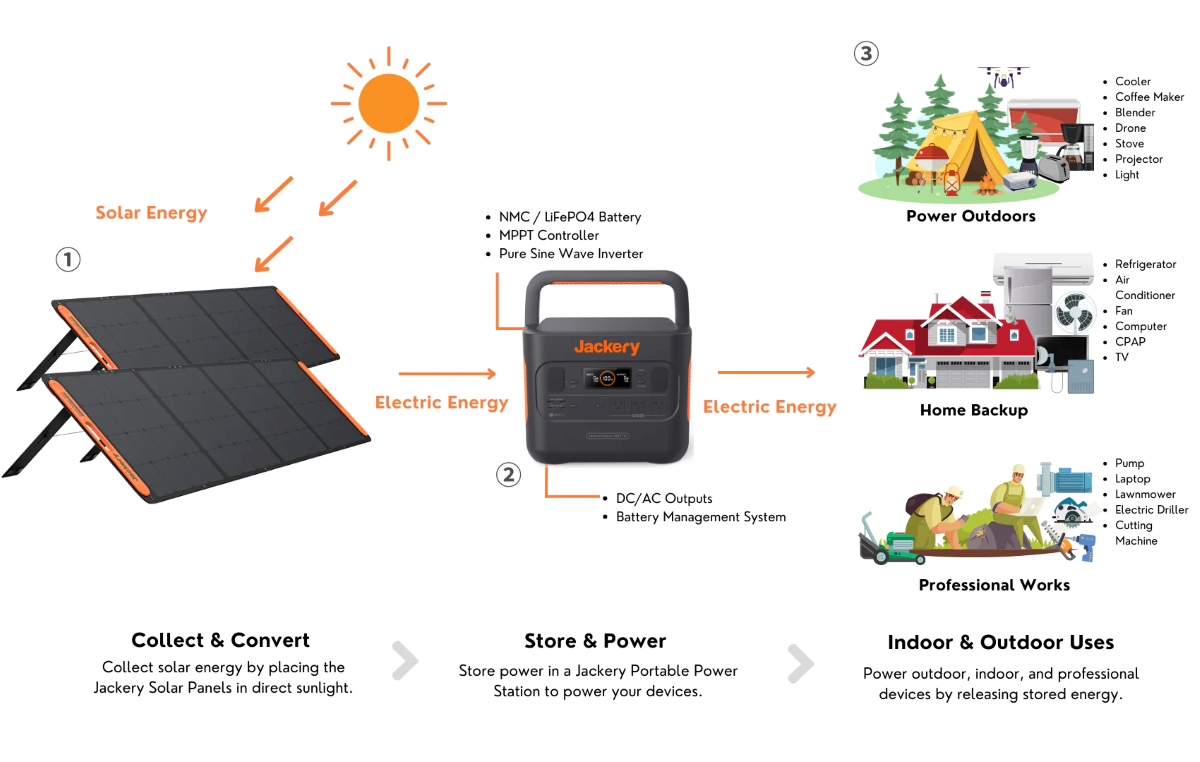
Before recommending Jackery Solar Generators to charge your solar lights, here’s a list of solar lights with their respective wattage and lumens:
|
Solar Light |
Wattage |
Lumen |
|
Step Lights |
1-3W |
12-100 |
|
Fence Lights |
10-20W |
50-200 |
|
Landscape Lights |
10-25W |
50-300 |
|
Path Lights |
20-30W |
100-350 |
|
Security Lights |
25-50W |
300-700 |
|
Street Lights |
80W+ |
5000+ |
Jackery Solar Generator 1000 Plus
Jackery Solar Generator 1000 Plus is a highly recommended solution for users intending to power up high-wattage street or security lights alongside other indoor and outdoor appliances. With a reliable battery backup that can generate more power, this portable generator is ideal for long camping trips and power appliances during extended blackouts. Besides, there’s also an Emergency Power supply mode that starts powering within 20ms of power outage.
Appliance Working Hours
- Solar Bat Street Light (20W): 53.7H
- Large Solar Floor Light (400W): 2.6H
- Solar Flood Light (300W): 3.5H
- Electric Oven (800W): 1.3H
- Gaming Laptop (140W): 7.6H

Customer Review: “I believe, if/when a need for emergency backup power happens, Jackery 1000 Plus is an excellent choice to survive a power outage.”
Jackery Solar Generator 500
If you need a reliable power source that powers your solar lights and a few basic appliances during extended blackouts or off-grid travels, then Jackery Solar Generator 500 has your back. One of the best-selling products, this is built in each type of output port that supports up to 99% of your appliances. Also, it weighs 13.3lbs, so it’s easy to carry anywhere.
- Solar Bat Street Light (20W): 22H
- Large Solar Floor Light (400W): 1.1H
- Solar Flood Light (300W): 1.47H
- Gaming Laptop (140W): 3.1H

Customer Review: “Charging my phone while camping on a box that was powered by the sun…that rocks.”- Kimberly
Jackery Solar Generator 300 Plus
Jackery Solar Generator 300 Plus is an ideal battery backup solution for campers, frequent travelers, or anyone looking for a portable and eco-friendly way to charge their mid- and small-sized appliances. It weighs only 8.27 lbs, so your back won’t hurt while traveling. Also, it operates in a noise-free mode, so you can have a peaceful movie-watching experience even outdoors.
Appliance Working Hours
- Solar Bat Street Light (20W): 12.2H
- Gaming Laptop (140W): 1.7H
- Desktop PC (80W): 3.0H
- Outdoor Inflatable Pump (60W): 4.0H

Customer Review: “The perfect power for my overall use. It comes with me everywhere and charges all my items. Love it!!!”- Terry
What Factors Affect The Solar Lights Performance?
To get the most out of your solar lights, it’s important to understand the factors that affect its performance. Below, we dive into these key aspects:
Positioning
The pivotal aspect determining the performance of solar lights is their placement and orientation. You can’t just keep it anywhere outside but strategically position it to harness maximum sunlight. For example, the solar panels facing the Northern Hemisphere receive more sunlight than any other direction.
Also, installing these in areas that receive peak sunlight throughout the day can potentially affect their charging and, in turn, their lighting performance. It’s recommended to keep the solar lights in open areas away from the shade.
Weather Conditions
Weather also plays a major role in determining the performance of solar lights. In winter, in some countries, the number of peak sunlight hours is very few, so the batteries aren’t charged properly, resulting in fewer lighting hours. The scenario is the opposite in summer, when these charge more efficiently and last longer at night.
However, it’s worth noting that solar lights have come a long way, and many these days can convert solar energy into electricity on cloudy days to keep your garden lit.
Quality of Components
The quality of components also dictates the number of hours your solar lights perform. The higher the quality of batteries, solar panels, and LED lights, the better and longer they function and the more efficiently they convert sunlight into energy. Also, investing in high-quality equipment saves you money in the long run, as you don’t need to run for frequent replacements and enjoy reliable lighting for years.
Battery Capacity
The basic premise of a solar light is that solar panels generate electricity from sunlight and store it in the battery. The larger the battery capacity, the more energy it can store at a time, and it illuminates the light for a longer duration, especially during extended blackouts or times of low sunlight. Therefore, investing in the right battery capacity for solar lights is important to ensure an effective and efficient performance.
Do Solar Lights Need Direct Sunlight FAQs
What size of solar generator do I need for a solar light?
Investing in a solar generator takes you closer to a sustainable and clean world. While it provides clean and renewable energy, it’s important you properly integrate them into your lifestyle. To select the right size of solar generator, you must determine the number of appliances run at a time and for how long.
For example, you’re powering solar bat street light (20W), large solar floor light (400W), and solar flood light (300W) using Jackery Explorer 1000 Plus Portable Power Station,
Working time= Capacity in Wh × 0.85 / Operating wattage of the appliances = 1264.64Wh × 0.85/720W = 1.5H
Note: While charging devices, there’s some power loss, and hence multiplied by 0.85.
Do solar lights work on rainy days?
Yes, solar lights use diffused sunlight to generate electricity on rainy days.
How much sunlight is needed for solar lights?
Solar lights need around 4-10 hours of direct sunlight to fully charge, depending on the type of light.
Why do solar lights stop working after a year?
Solar lights are equipped with rechargeable batteries to store energy produced during the day. However, these batteries degrade over time due to repeated charging and discharging cycles, and they stop working after a year.
Are you supposed to leave solar lights on all the time?
Turning off the solar lights when they aren't needed helps save energy, which you can use another time.
Final Thoughts
Let's hope the guide answers your question: do solar lights need direct sunlight or not? Gone are the days when solar lights won’t function in shady or indirect sunlight. Though the performance isn’t the same as in direct sunlight, it can illuminate your backyard or garden for a few hours. You can also bolster its efficiency by replacing batteries when worn out or placing them properly. If you live in a cloudy area or don’t have a proper spot for lights to access sunlight, get Jackery Solar Generators to charge them. These are a reliable, portable, and efficient way to charge your solar lights.






















































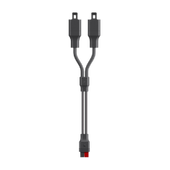

















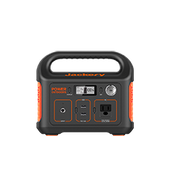



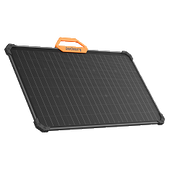






































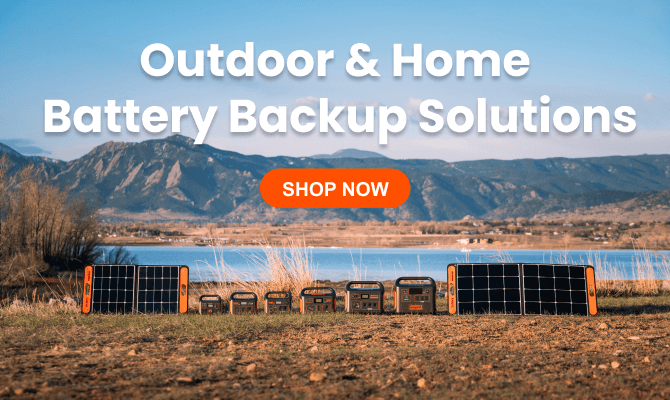
Leave a comment